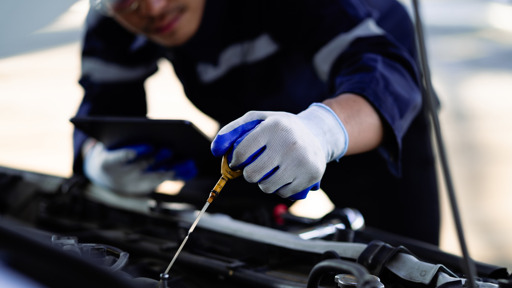New cars absolutely do have dipsticks; they’re the ones designing them.
Notwithstanding the potential for software bugs or other issues inherent with monitoring oil levels only digitally, monitoring just the oil level is not the sole purpose of the dipstick. Being able to physically see a sample of the engine oil is a vital diagnostic tool and can alert an owner or mechanic to a head gasket problem or other oil contamination issue, or if something is grinding metal shavings into the oil, etc.
For what it’s worth I have yet to actually physically see a new vehicle without an oil dipstick. I guess they’re out there, but so far I’ve been lucky. But I have already had quite a few automatic transmission equipped cars without a transmission dipstick cross my path, and that’s already enough of a pain in the ass. If you’re lucky there’s a side plug in the transmission case you can use to check the fluid condition and level (after crawling under the vehicle…) but in a lot of cases there isn’t even that – your only recourse is to drop the transmission pan off entirely, which causes you to lose all the fluid in the process. And you’ll probably also have to replace the gasket while you’re at it. Needless to say, this is an incredibly moronic design decision.
My wife has a 2015 Jeep Grand Cherokee. The AC condenser got a leak in it and it was going to be over $2k to fix in a shop. I took it on myself to save money. The condenser mounts to the back of the radiator, so I had to get at it by removing the bumper and everything between that and the engine block. Also attached part of the radiator is the transmission cooler. Unhooking everything meant that I was going to lose some fluids, but that was fine, I’d top them off and pay to have refrigerant added.
After I reassembled, I when to check the trans fluid levels, and couldn’t find the dipstick. It turns out, like you said, if you crawl under the vehicle, on the back of the trans pan is a bolt you can remove, and if you have a special dipstick that you buy separately for this sole purpose, you can stick it in there to check levels. There’s not way to add fluid without pumping it in there, but at least you can see how much you have.
Since I only lost less than a quart, I took it into the shop, explained what’s up, and asked for it to be topped off. The shop guy calls back later, and told me that to do the trans fluid, the filter is only sold with a whole new pan, and because Chrysler, the fluid cost like $40 a qt, and I needed like 15 to fill it. It still cost more than $800 to just do that, then more than $500 for the refrigerant. I still saved about $500-1k in parts and labor for what I did, but, the lack of dipstick and fill tube was an extremely inconvenient and expensive thing.
if you crawl under the vehicle, on the back of the trans pan is a bolt you can remove, and if you have a special dipstick that you buy separately for this sole purpose, you can stick it in there to check levels.
You don’t need a disptick, you just fill it until it starts coming out of the hole. Lots of heavy equipment works this way.
You just check it with your finger. Then you use a container with a tube and squeeze the fluid in until it overflows.
And if you manage to position yourself right you can get a face full of gear oil.
Note: make sure you’re further away than you think you have to be, oil doesn’t always flow how you’d expect.
I hate all these automatic sensors in new cars. I don’t usually buy new cars, I get ones that are a few years used. Almost all of them have a light on the dash for a “tire error” because the stupid sensor has died and no one in their right mind wants to spend $300 to replace a thing that tells you your tire pressure is low. Plus, the things die in a few years anyway.
I just do the Homer Simpson solution and put a bit of black tape over the tire error light.
$300? A TPS sensor replacement should cost like $75 including the sensor itself.
A tire pressure sensor sensor? And the tire pressure sensor sensor includes the sensor itself? 😉
TPMS = Tire Pressure Monitoring System
So yes, “TPMS sensor” is a valid term.
Back when I worked at a BMW store we had to, after changing the oil, start up the vehicle and get it up to temperature before it would give us a reading. Several times the vehicle caught on fire for some reason during this process. So fucking stupid.
The real reason is that owners would not reseat the dipstick properly, which would cause a vacuum leak and a lean fuel mixture that would trigger the CEL.
But you can’t expect Jalopnik writers to know basic facts like this.
The real reason is that owners would not reseat the dipstick properly, which would cause a vacuum leak and a lean fuel mixture that would trigger the CEL.
That is absolutely piss-poor design. But definitely a BMW thing to do.
Vendor tech does maintenance and fails to check critical component of system; blames customer
Good tech.
This proactive approach helps to avert potential engine damage
Ah yes, the old “you’re too stupid to do anything by yourself, so we kindly prevent you from trying”
To be fair, when you drive a dangerous vehicle on a public road, you’re not only putting yourself in danger…
I’m not saying that we shouldn’t ever trust people to do their own repairs, but just thought i’d play devil’s advocate
I mean, yeah, most people probably don’t know what they’re doing but does that mean that no one should be able to fix their own stuff any more?
Literally said the opposite.







